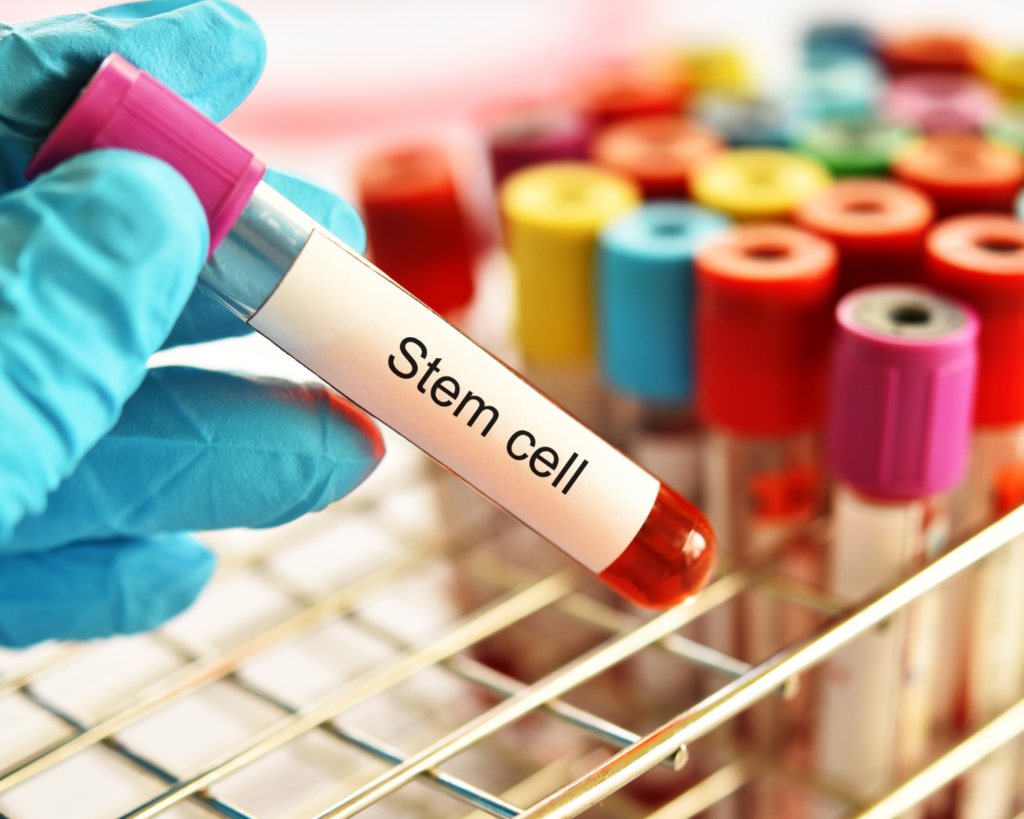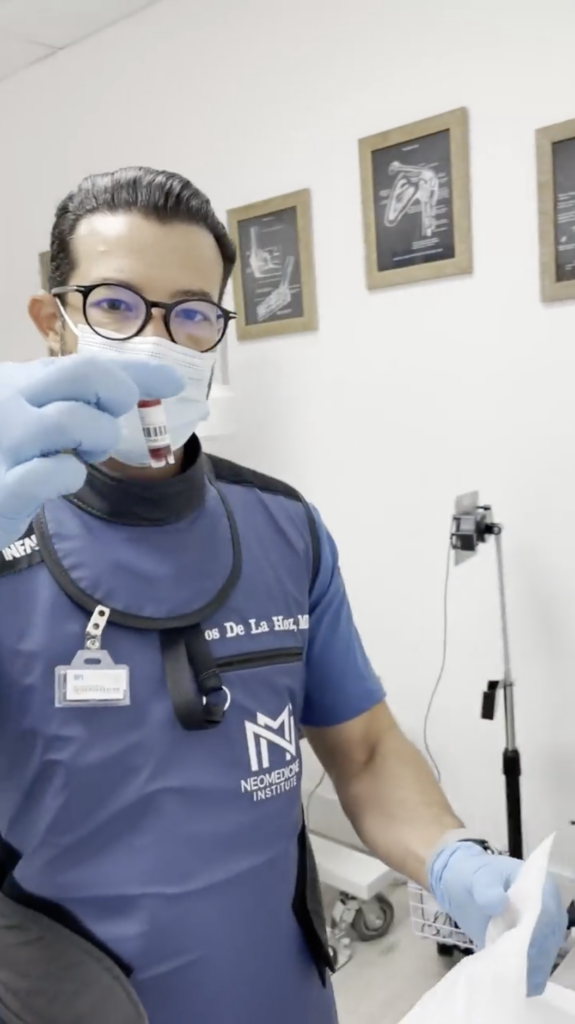Stem cells are powerful tools in the fight against age-related disease and more
Innovations and breakthroughs in the medical, health and well-being industries can’t occur often enough. From new treatments for chronic disease to non-surgical treatment options for common musculoskeletal conditions, modern medicine is giving us more options to help us feel — and age — better. One innovation that is quickly gaining attention is adult stem cell banking.
You’ve likely heard about the power of stem cells. Stem cell therapy is a regenerative medicine treatment that provides an entirely new way to manage and heal degenerative joint and bone conditions, as well as injuries. These unique, powerful cells are our bodies’ “building block” cells, and they can develop into any other kind of cell your body needs — including cartilage, ligaments, tendons, muscles and more. Stem cells have been shown to help slow the progression of osteoarthritis and treat other soft tissue injuries, and they have demonstrated the incredible potential to cure HIV and reverse damage from stroke. They’re also being used for tissue engineering, the creation of organs, certain types of heart disease and other degenerative conditions.

While today’s parents have the option to freeze their newborn baby’s umbilical cord blood, which contains stem cells that can be used to treat disease, adults looking to take advantage of the health benefits that their own stem cells can provide have limited options. But as the FDA expects to approve approximately 10 to 20 cell-based therapy products each year, including stem cell-based therapies, it’s clear that giving people the opportunity to store and use these powerful cells is a sound investment in the future of health, wellness and medicine.
Continue reading to learn about stem cells, the benefits of banking them and the stem cell banking process.

Want to learn more about regenerative medicine?
Regenerative medicine is a rapidly expanding field of medical treatment that includes stem-cell based therapies.
What’s fueling stem cell research
As we age, our bodies’ ability to respond to tissue injury weakens, which contributes to the incidence of age-related diseases. Scientists and medical researchers largely consider the cause of these functional declines to be the exhaustion of stem cell functions. That’s why there is so much interest in harnessing their power to reverse stem cell aging at the cellular level and rejuvenate the body’s aging processes.
Every year, medical research into stem cells and related stem cell therapy treatments is quickly increasing. As of 2022, there are more than 6,000 clinical trials taking place using stem cells to treat diseases like cancer and blood-related diseases including leukemia, lymphoma and multiple myeloma, as well as metabolic disorders and immune system deficiencies.
It’s currently estimated that as many as 1 out of every 3 people may benefit from a regenerative medicine application like stem cell therapy in their lifetime. Today, adults around the world can cryogenically preserve their own stem cells, which can be used later for personal treatment like pain relief, anti-aging, and conditions including tendonitis, rotator cuff tears, muscle tears and severe sprains.
Types of stem cells
One of the most common types of stem cells preserved through stem cell banking is the Mesenchymal stem cell (MSC). MSCs — cells that can self-renew and differentiate — can regenerate damaged tissue by responding to inflammation and aiding in tissue repair. They also can help initiate the repair processes in various diseases and disorders, including age-related orthopedic degenerative diseases. Clinical trials are currently looking at MSCs for therapeutic interventions in severe degenerative and inflammatory diseases.
Hematopoietic stem cells (HSCs) are found in peripheral blood, bone marrow and umbilical cord blood. They can develop into all types of blood cells. HSCs are used in life-saving bone marrow or stem cell transplants for patients with diseases like leukemia and lymphoma. They’re also being used in clinical trials for treating autoimmune and genetic diseases.
Where do stem cells come from?
Stem cells are harvested from abundant tissue within your body:
- Peripheral blood: Like the process of donating blood
- Bone marrow: Simple, 10-minute outpatient procedure with local anesthesia or mild sedation in which cells are collected from the back of the hip bone
- Adipose (fat) tissue: Mini liposuction procedure under local anesthesia or mild sedation

Stem cell banking benefits
Stem cell therapy is still considered a relatively new area of medicine — but we already know that it can help treat dozens of disorders and diseases. Here’s an overview of some of the most common uses:
1 in 2 adults are impacted by a musculoskeletal condition.
- Degenerative disease
- Cartilage disorders
- Osteoarthritis
- Spinal cord injury
- Osteonecrosis
20 million Americans suffer from a form of neuropathy.
- Stroke
- Cerebral palsy
- Neuromyelitis Optica
- Alzheimer’s disease
- Parkinson’s disease
- Liver disease
Currently, about 30 million Americans have a form of liver disease.
- Lung disease
COPD is the 3rd leading cause of death worldwide.
- Chronic and stalled wounds
Autoimmune diseases represent the 3rd most common cause of chronic illness in the U.S.
- Lupus
- Type 1 diabetes
- Bowel inflammation
- Multiple sclerosis
About 659,000 people in the U.S. die from heart disease each year—that’s 1 in every 4 deaths.
- Damage following a myocardial infarction
- Vascular damage
- Heart disease
Can stem cells cure type 1 diabetes?
Type 1 diabetes is a chronic condition that impacts more than 37.3 million Americans — and treating the disease involves daily blood sugar level monitoring and insulin injections to ensure the body can properly function. Researchers at the Harvard Stem Cell Institute have found that transplanting pancreatic stem cells into type 1 diabetes patients can help restore insulin-producing cells, demonstrating the potential to cure the disease.
The stem cell banking process
As of 2022, there are only four adult stem cell banks in the U.S. Prodigy Cells, a partner of NeoMedicine Institute that’s led by an experienced team of regenerative medicine and stem cell therapy experts, is one of two in Florida. Your stem cells are autologous, which means they will always be a 100% match to you and there is no chance of a reaction or rejection. They can also potentially be used on immediate relatives.
Here’s an overview of the process:
- Retrieval: Your local doctor will perform an analysis to determine the best method for stem cell collection. The retrieval procedure is minimally invasive, low-risk and performed in an outpatient setting.
- Shipment and cryopreservation: Prodigy Cells will facilitate the safe shipping of your stem cell sample to the Prodigy Cells lab, where it will undergo quality testing and cryogenic preservation within 48 hours.
- Results: You’ll receive test results 6-8 weeks after your sample is received.
One of the main reasons we age is due to a decrease in the total number of stem cells in our bodies. Additionally, every day, we’re exposed to factors that damage our DNA. That’s why if you’re considering banking your stem cells, it’s important to do so as early as possible. Younger cells have a stronger capacity to restore damaged tissue.

The future of medicine is here
The Wizemann Institute of Science recently reported a “world’s first achievement” of a synthetic mouse embryo, made solely from stem cells and a special embryo. The continued scientific research and subsequent breakthroughs like the Wizemann Institute’s support the idea that stem cells could soon generate human organs and tissues that could be viable for transplant — making organ transplants a thing of the past.
As stem cell research advances, it’s reasonable to assume that we will only uncover more ways that these cells can help people from all walks of life — those suffering from life-threatening diseases, chronic conditions, everyday pain and other age-related injuries and illness. Storing your stem cells now will ensure you have access to their healing power in the future, should you need it.
If you’re interested in learning more about adult stem cell banking, contact Prodigy Cells today.

